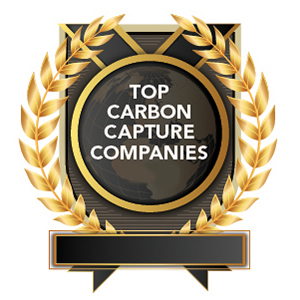Empowering Climate Intelligence with AI-Driven Climate Analyst Platforms in Europe
Wednesday, November 26, 2025
As environmental threats become more unpredictable and severe, the demand for accurate, real-time climate data and actionable insights has surged across industries, governments, and scientific communities. Climate analyst platforms powered by AI are pivotal in transforming raw environmental data into strategic decisions.
These platforms have evolved from basic forecasting tools to advanced, AI-enabled systems capable of modelling climate patterns, predicting risks, and shaping sustainability strategies. In Europe, where regulatory pressure, public awareness, and environmental commitments are intensifying, AI-driven climate platforms are not just a technological advancement.
Driving Forces and AI Integration in Climate Analysis
The frameworks mandate rigorous monitoring, reporting, and verification of climate impacts and emissions, creating a massive demand for accurate and dynamic climate data. Extreme weather events such as heatwaves, floods, wildfires, and droughts have intensified across the region, creating financial, social, and environmental disruptions. Governments, insurance companies, agriculture stakeholders, and urban planners increasingly rely on AI-enhanced climate platforms to predict risks, plan responses, and build resilient systems.
The platforms consolidate vast datasets from satellites, sensors, weather stations, and historical climate records, providing a holistic view of environmental changes. AI brings transformative capabilities to these platforms by enabling advanced pattern recognition, machine learning-based forecasting, and real-time analytics. AI models can now predict flash floods in a specific region hours in advance or model the long-term impact of land-use changes on temperature and precipitation patterns. Climate data often comes from disparate sources with varying levels of accuracy.
AI algorithms can automatically detect inconsistencies, correct errors, and harmonise datasets to ensure reliable inputs for climate modelling. AI can simulate multiple climate scenarios under different policy interventions, helping decision-makers choose the most sustainable and cost-effective paths forward. Another critical factor accelerating AI adoption is the explosion of satellite-based Earth observation programs in Europe, particularly through the Copernicus initiative. With petabytes of real-time environmental data generated daily, only AI-driven platforms can process and make sense of this information in near real-time.
Applications and Market Impact
AI-driven climate analyst platforms in Europe are evolving rapidly, driven by technological innovation and growing cross-sector demand. The forecasts help cities prepare for urban heat islands, infrastructure stress, or water scarcity. For instance, city planners in Paris and Berlin now use AI-based tools to design climate-resilient infrastructure based on hyperlocal data projections. AI enables scenario-based risk modelling under different emissions pathways and climate policy outcomes. The trend is growing in importance with the increasing emphasis on ESG compliance across European markets.
Agriculture and food security represent a critical application area. AI-enhanced climate platforms help farmers and policymakers monitor soil health, optimise irrigation, predict crop yields, and plan harvests based on real-time weather and climate forecasts. The EU’s Common Agricultural Policy (CAP) increasingly relies on digital tools to ensure sustainable land use and food production. The platforms improve energy grid stability by predicting generation patterns based on weather and climate conditions. The ability to accurately model supply fluctuations and demand patterns becomes vital.
Governments use AI-driven platforms to simulate the outcomes of climate policies and track progress toward emission reduction targets. These tools help optimise carbon pricing models, assess the benefits of reforestation, or evaluate the impact of transport regulations. For example, climate analysts in Nordic countries use AI systems to balance economic growth with decarbonisation strategies through scenario modelling. The cumulative effect of these applications is substantial. Their influence extends to shaping cross-border policies, improving supply chain resilience, and informing climate justice initiatives to protect vulnerable populations.
Challenges and Practical Solutions
Climate data is often fragmented across organisations, stored in different formats, and governed by varied access policies. A coordinated approach toward open data standards can address the issue by enabling seamless data sharing and harmonisation. AI models can inadvertently reflect the biases of historical data or skew predictions based on flawed assumptions. It becomes particularly problematic when the outputs inform critical policy or risk mitigation decisions. Regulatory frameworks are beginning to address these concerns by mandating transparency, fairness, and accountability in AI deployments.
Developing and maintaining AI-driven climate platforms requires a unique blend of data science, climate modelling, software engineering, and environmental science expertise. Many European institutions face difficulties in recruiting and retaining such talent. The solution lies in public-private collaborations to build capacity, including specialised training programs, university-industry partnerships, and cross-border knowledge exchange platforms. Running AI models on massive climate datasets demands high-performance computing capabilities and cloud infrastructure.
The ongoing digital transformation across the continent is driven by environmental urgency, regulatory mandates, and economic opportunity, which creates fertile ground for the widespread deployment of climate analyst platforms. Ensuring data transparency, addressing skill shortages, building interoperable infrastructure, and cultivating user trust are essential to sustaining this momentum. Strategic investments, regulatory alignment, and collaboration across sectors will be critical in overcoming these barriers. AI-powered climate analysis is not a luxury but necessary for Europe's sustainable future. Through the intelligent use of AI, the continent has a powerful tool to navigate the climate crisis with resilience, foresight, and collective strength.
















